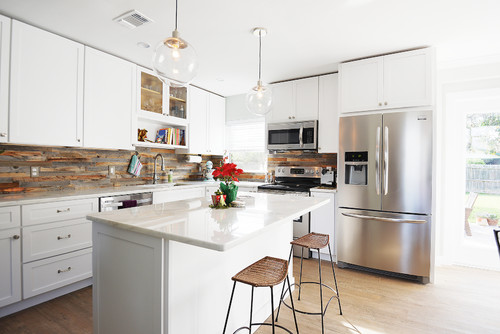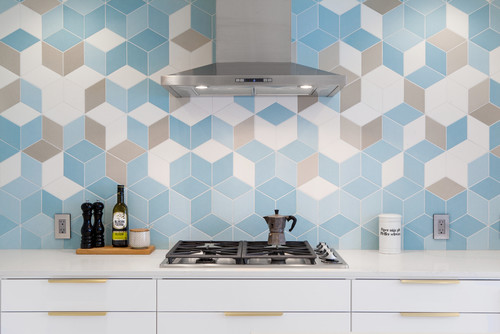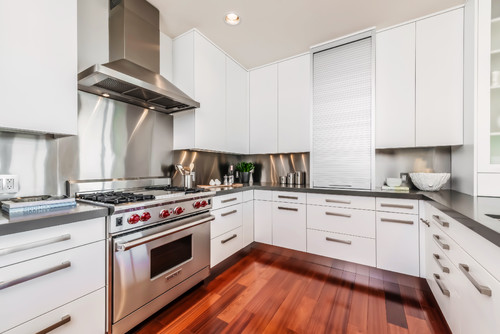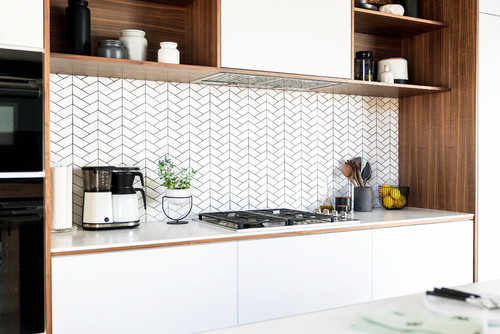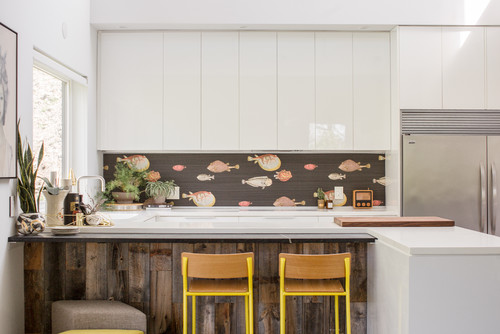
What Type of Kitchen Backsplash is Right for You?
Kitchen backsplashes are designed to protect the wall behind your stove and countertops from the occasional splatter of water, grease, and foodstuffs. Backsplashes can be fun and functional, offering an excellent opportunity to add a decorative focus to your kitchen and express your style.
Traditionally, backsplashes were only four inches tall and only prevented liquids from seeping behind lower cabinets. Now, many homeowners opt to extend backsplashes higher, meeting the upper cabinets or covering the wall up to the ceiling.
Depending on your kitchen’s size and layout, the total square footage of this vertical space may be small enough that you can splurge on backsplash materials. There are also many ways to make a splash on a budget.
Here are six appealing options.
1. Warm It Up With Wood
A wood backsplash is an excellent way to add warmth to a kitchen filled with white cabinets and stainless appliances. In addition to distressed barn wood and other reclaimed boards, popular wood choices include tongue and groove paneling, beadboard, and shiplap.
Be sure to treat the surfaces with polyurethane or varnish before installing to protect the wood from stains and water damage. A glossy varnish will be easier to clean, but a satin finish will preserve the wood’s natural look.
Wood is not as heat resistant as many other backsplash materials, so you may not be able to use it behind your cooktop. Check your local code requirements, which commonly require at least 18 inches between gas burners and surrounding flammable materials.
2. Go Bold With Colorful Tile
Ceramic and porcelain tiles are still the most popular choices for backsplashes. Tile comes in a wide range of styles, shapes, and colors, from neutral shades to bright colors. You can also incorporate handmade tiles to create unique patterns, including mosaics.
Tile is incredibly fire and heat resistant, making it one of the best options behind stoves and cooktops.
Keep in mind that smooth, glazed tile will be easier to wipe down and keep clean than textured or porous versions.
When choosing tile, you’ll also need to consider grout colors. Do you want your grout lines to disappear into the background or play a starring role? In general, darker grout is easier to keep clean, especially in hardworking kitchens.
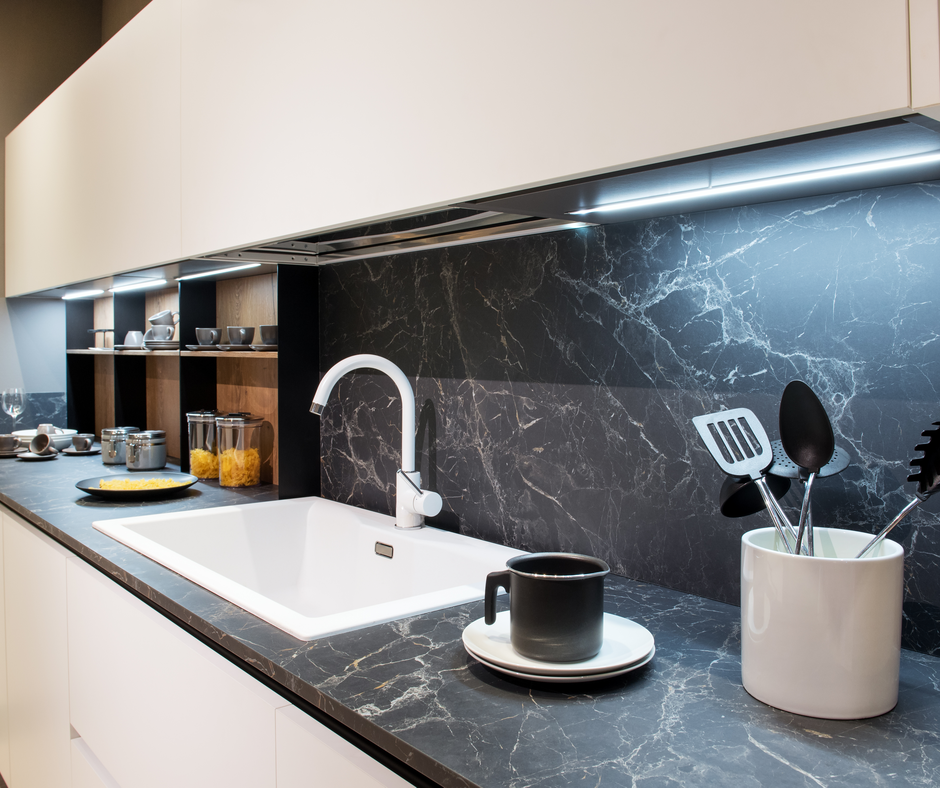
3. Coordinate With Your Countertops
If you’re concerned about keeping grout lines clean, consider eliminating them with a smooth surface backsplash that matches your countertops. This can be a cost-effective approach if you’re already purchasing a slab of natural stone and can incorporate the “leftover” pieces as a backsplash.
Also, consider undercabinet lighting. Can you showcase a coordinated countertop and backsplash to maximum effect?
4. Shimmer With Stainless
If you like a modern, professional chef vibe, sheets of brushed stainless steel may be your perfect backsplash. It’s one of the easiest surfaces to clean, and undercabinet lighting glows on its reflective surfaces.
Stainless steel tile is another option if you like the warm glow of stainless but want to add patterns or texture.
Unlike many other metals, stainless steel does not require polishing. But it is relatively easy to scratch and dent it.
5. Take Subway Tiles Up a Notch
White, four-inch subway tiles are a classic option. But their frequent use leaves some kitchen designers questioning how long they’ll remain popular.
One way to achieve a similar look with added flair is to arrange rectangular tiles into herringbone patterns. Or, select other geometric shapes like hexagons and diamonds.
Glazed white tile with a textured pattern is another option, although it will be harder to wipe it down and keep it clean.
Consider using a dark grout with white tiles. That way, dirt, grease, and stains are less likely to show. Plus, the pattern of your tile will “pop."
6. Have Fun With Wallpaper!
Wallpaper is making a comeback. With design options to suit every taste, from funky and fun to sublime and sophisticated, wallpaper patterns can add a signature touch to any kitchen. Plus, it’s relatively easy and inexpensive to remove and replace it if you change your mind later.
Just keep in mind that wallpaper isn’t nearly as durable as most backsplash materials and offers no heat resistance, so it’s a better option for countertops than cooktops. It’s best to add a layer of glass or plexiglass to protect it, plus a bead of clear caulk where the glass meets the countertop.

